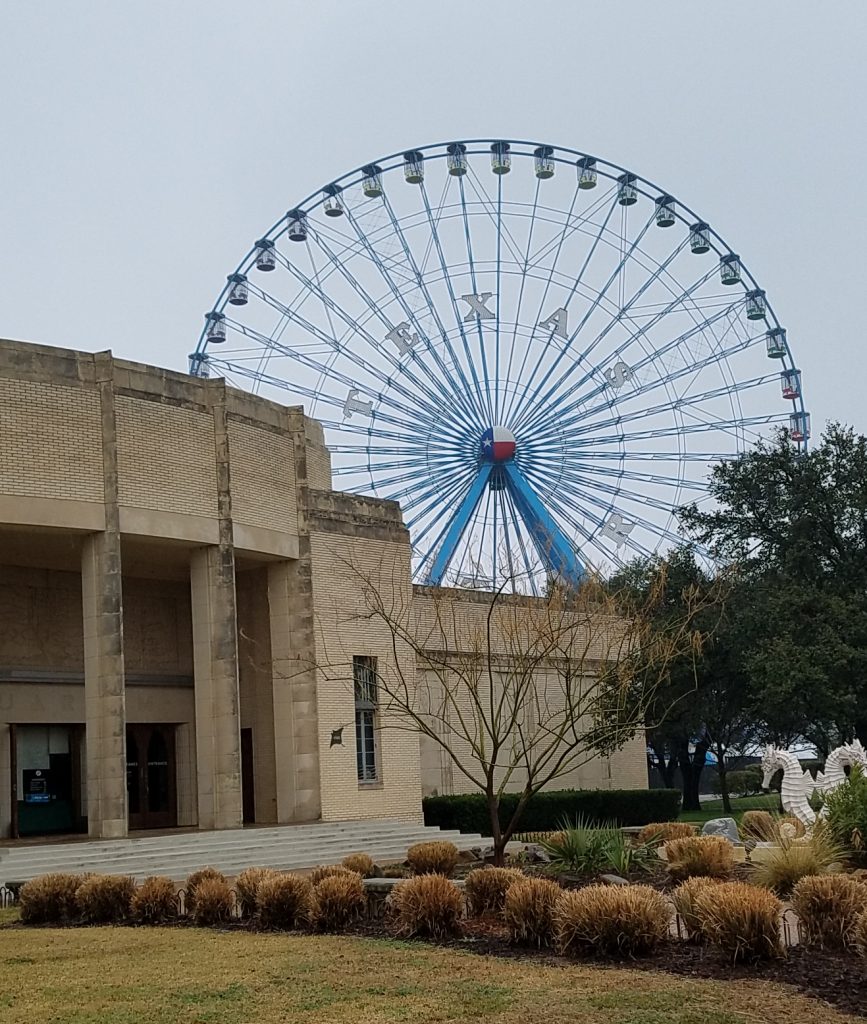The Big Wheel
It’s hard to escape noticing the Texas Star Ferris Wheel towering over the landscape at the Dallas Fair park:  After all, it’s the largest Ferris wheel in the United States.
After all, it’s the largest Ferris wheel in the United States.
As you’re watching it turn, there are lots of things you might wonder about, but if you’re like me, one of the first that comes to mind is: How fast is your gondola whisking through the air when you ride it?
To answer this question, we will go back to the venerable equation:
rate = distance / time
for which we will need to obtain a distance traveled and the time it takes to travel that distance. The obvious time to use is the time for one full revolution of the wheel. If the Texas Star is turning when you visit, then you can grab a stopwatch, choose one of the gondolas, start your timer just as it brushes the ground at the bottom of the wheel, follow it around with your eyes, and stop the time when it returns to the same location. If the wheel is still, you-ll have to rely on information found elsewhere on the web or on my timing — about 40 seconds for a full revolution.
How far does the gondola go in one revolution? Well, what path is it traveling along? It’s a circle, the characteristic shape of a Ferris wheel. So we need the perimeter of that circle, also known as its circumference, for which we can use another famous equation:
Circumference = π × diameter.
How to find the diameter of the wheel? If you can get up close to the Texas Star, you can start all the way at one side where the farthest-out bit of the wheel is just above your head, and count your paces (try to take equal-sized steps) walking alongside the wheel until the opposite side of the wheel is just above your head. Then with a measuring tape measure the length of ten of your paces (again, trying to use that same equal-sized step you used when pacing off the wheel). Divide the number of paces you counted by ten (hint: that’s easy to do by moving the decimal point one position to the left) and multiply by the length of ten paces.
If you can’t get close enough to the wheel for this method, then again you can rely on published information. According to a 2007 New York Times article, the diameter is approximately 212 feet.
Plugging in to the equation, the gondola travels about 666 feet in one revolution. So using the rate equation, that’s roughly 666/40 = 16.65 feet per second.
OK, that’s nice, but how fast is that? To get a better handle on the speed, we’d like to convert it into a more familiar unit, like miles per hour. To do that, we need to use some unit conversions, which we should write like fractions so that we can cancel:
(16.65 feet / second) x (1 mile/5280 feet) x (3600 seconds/hour) = 11.35…miles/hour
So the moral of this story is that when you’re riding the Texas Star, you’re traveling at just over 11 miles per hour — not quite as fast as you can ride your bike. On the other hand, it’s pretty hard to ride your bike 20 stories high into the air!

